Interview to Massimo Attardi
Massimo Attardi is an artist that absolutely uses bichromate gum in a personal and iconoclastical way. The often conformed panorama of alternative and antique print techniques reborn with his work. A classical technique such as the gum one, exploited for decades, has been reinvented and put in service of real expressive exigencies, giving life to Massimo Attardi’s personal and identifying visual world.
It has for sure been a pleasure when Massimo Attardi accepted to be interviewed and let me publish some of his recent photographs on Camera Obscura.
Fabiano Busdraghi: Since the advent of digital photography, analogical photography seems to live a new life and so are alternative and antique techniques. More than characteristics and result, some critical analysis attribute this to the recover of the expressive media low speed, such as for pinhole photography, that counter-balance the frenetic commercial photography, based on milliseconds.
Massimo Attardi: I’m not with this way of thinking, slow speed doesn’t absolutely mean quality.
The expressive media (bichromate gum print for this case) is slow itself, it’s its characteristic and it is not modifiable. If it would be, casually, a rapid technique, with the results we obtain now, would it be less worthy?
Pinhole photography is nothing more than curiosity nowadays. Paolo Gioli is the only who brought pinhole photography to an artistic state… The rest is nothing! Moreover I think that the commercial picture (maybe the camera?) that gain the eighth millisecond fantastically enlarge the creativity.
When we want slow speed… well, there’s always B pose and sometime also T pose. Metal thimble over the lens, microscopic hole… and go!
Fabiano Busdraghi: I’m with you when you talk about slow speed, even if I do appreciate some works of Stephen Eckel, Martha Casanave, Abelardo Morrell (just to cite some artists that work with the hole). I think that technical evolution of photography is at our creativity service, and I’m happy to dispose of all modernity instruments. Actually sometime the characteristic I less enjoy of the alternative technique I practice is their real slow speed!
But let’s go back to the reasons behind your choice to use antique techniques. Some authors underline the uniqueness and unrepeatability of the work. Some other point the accent on the original and personal component in opposition to homologation derived by the use of serial instruments, such as industrial papers. I do not even think this is the problem. I think it is a reworking of the contact with reality, the direct interaction with materials, the sensations on skin, the pleasure of using your own hands to build an image. Which is your principle motivation for using bichromate gum as a printing technique?
Massimo Attardi: About unrepeatability of the work… I don’t know what to say. I’m an artist, and a series of 3/5 identical or similar works is not a big deal, is part of the work. If we want to talk about seriality in contemporary art, well is not so strange, look at Andy Warhol for example.
It depends on why someone does something. If it is an hobby, well let’s make a copy, show it to friends, exchange information with them, spend hours and hours in dark room to experiment, etc… I must say it is thank to people who dedicated their energy to re-discover antique techniques that I started doing my job, so… chapeau.
But… more than this, I think that generally (among those who use alternative techniques) there’s a strong research of the best nuance, of the deepest black, of the most elaborate technique, losing the principle way: the picture itself! I surfed sometime some sites about antique techniques, but I saw mostly banal, almost ugly pictures! Maybe magnificently printed, for sure, but… I think it’s something like the finger and the moon.
There should be a measure in dividing time between taking and printing picture for me (but this is only my opinion).
Sometime a beautiful picture, badly printed, keeps intact its own emotional impact. A bad picture printed gorgeously will not interest to anyone.
In high level photography there’s the printer, whose character and morality, refine an ability and sensitivity in using chemical agents, lights, time and it is thankful for all this. Otherwise the photographer is thankful it can take pictures, less from printing. The collaboration between those two figures is often indispensable to obtain wonderful prints out of beautiful takes.
I think that photographers that approach alternative techniques (except for those who work on them as a hobby) should decide if it is better to spent nights and nights deciding which one is the best print more than taking pictures.
I got to bichromate because I was searching for something… and I didn’t know what. I was mostly searching for a personal manner to create images through a technique that let me free. And actually at the beginning it wasn’t absolutely so.
Bichromate gum, used as in ‘800 did, is quite boring; results, even if beautiful, are always the same. I started in 1990 and after a year of attempts on every kind of surface such as metal, stone, plexiglas, glass (sometime with wonderful results), I found a ductile method to print, that set me free from the classical use of bichromate gum.
I also realized works of 5 (five) meters. I can practically do an infinite number of layers (sometime for an image I made more than twenty) without deteriorating the support.
Fabiano Busdraghi: What you say is actually true, many alternative techniques printers or traditional dark room practitioners, some illustrious names included, hide beside technique spectrum, concealing themselves the expressive emptiness of their images. First time I saw your pictures, I was astonished by the modern, untraditional use of bichromate gum, your intense and strong colors.
Even the support you use is quite particular. More than rigidity, which let you record different layers without deteriorating, is wood as print support choose for an expressive or conceptual exigence? Is the choice due to a research of materiality - gum on wood that recall contact and consistence of skin, the sensation of your model body - or is it a theoretical decision - wood as living, physical material, which has at least an animated past as the images, which were living people before the shooting and wood was once a tree?



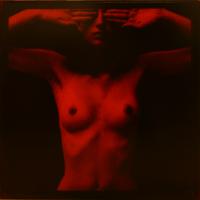
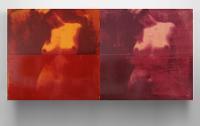
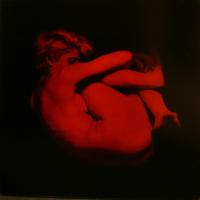
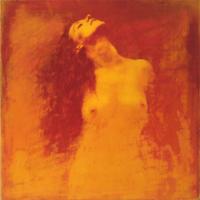

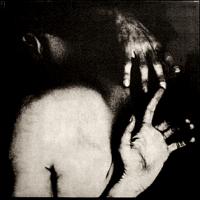
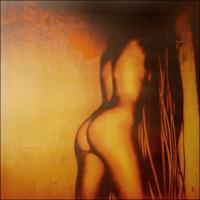

Camera Obscura » La prima candelina
said, June 7, 2008 @ 12:32 PM :
[...] Intervista a Massimo Attardi 1,623 visite [...]
Camera Obscura » Le nuove gomme bicromate su legno di Massimo Attardi
said, June 9, 2008 @ 10:20 AM :
[...] abbiamo detto nell’ultimo post, l’intervista a Massimo Attardi è in assoluto l’articolo più cliccato di Camera Obscura. I lettori saranno quindi felici di [...]
davide
said, October 9, 2008 @ 8:01 PM :
Sono stupito dai tuoi quadri sono molto belli e come tu li realizzi.